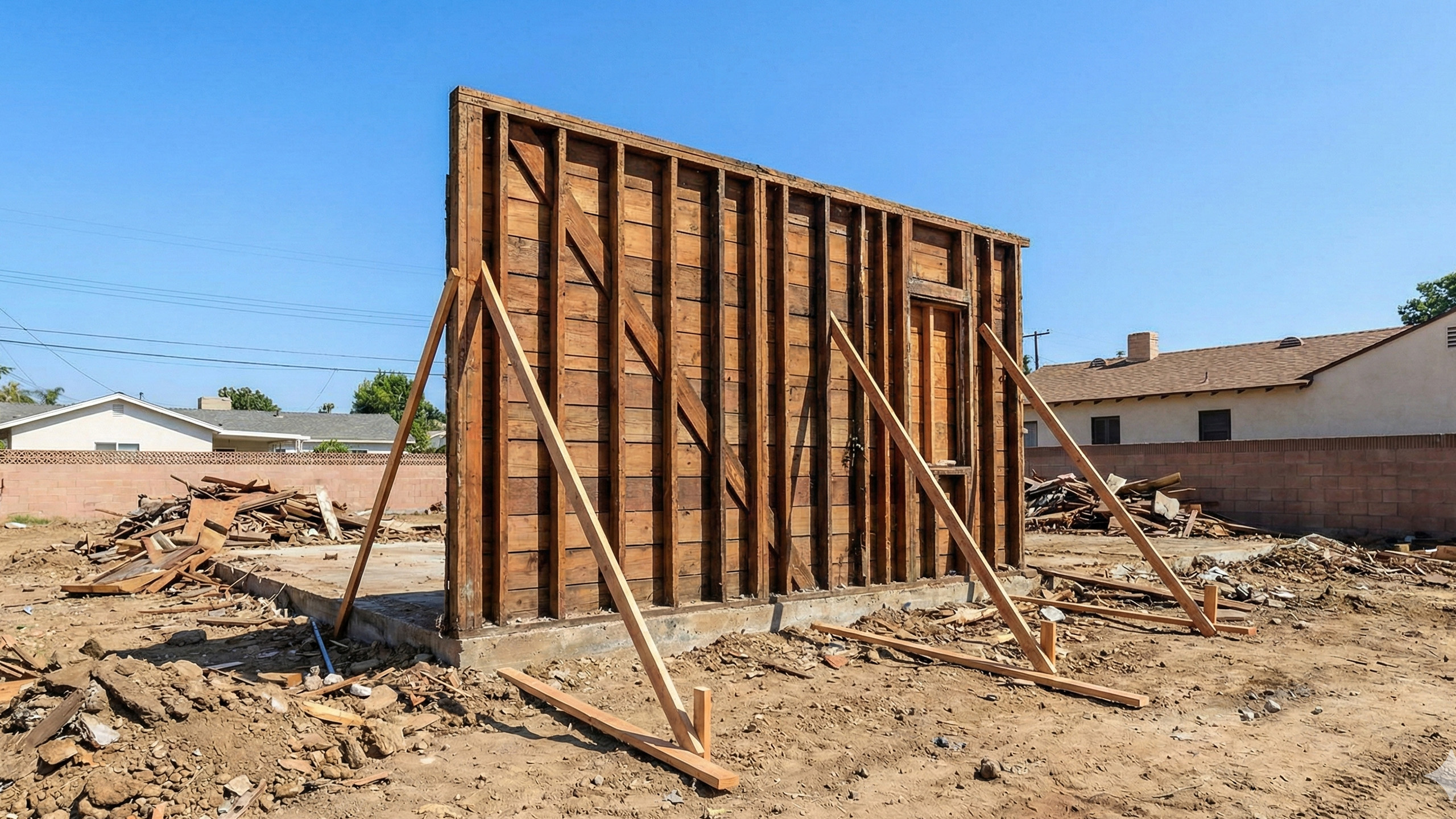Building a custom home is an exhilarating and deeply rewarding endeavor that empowers you to transform your vision into reality. It allows for the creation of a dream living space, meticulously crafted to meet your unique needs and desires.
However, it is crucial to approach the custom home building process with a clear understanding of the factors that truly matter. While the cost per square foot is frequently used as a benchmark for affordability, solely relying on this metric can very easily be limiting and misleading.
Far more often than not, a cost per square foot budget determination will result in a budget that is far too low to achieve your project goals. Unfortunately, it is the most common basis for price quotes given by contractors, often without even having a design in place.
In this article, you’ll learn:
- Why calculating your project budget based on a cost per square foot number will result in an incomplete picture. This leaves you much more likely to estimate a budget that’s too low to build a home that lives up to your expectations. It’s a surefire way to set your project up for cost overruns and ultimate failure.
- Why fixating solely on the cost per square foot may inadvertently result in overlooking unique opportunities to craft an exceptional custom home. We shed light on the other critical aspects that demand consideration, and emphasize those that help achieve a remarkable outcome, such as quality, craftsmanship, design, and functionality.
By exploring these perspectives, we aim to provide invaluable insights that can guide you as you navigate your custom home project. Our goal is to empower you to make well-informed decisions that prioritize your vision, budgetary considerations, and long-term satisfaction with your dream home.

What’s Included in a Cost Per Square Foot Calculation?
Great question! In order to understand why cost per square foot estimates fall short, it’s important to understand both what they include - and what they don’t.
Let’s set up a hypothetical scenario here: You’ve recently purchased a home that needs a ton of work, or you have an empty lot and want to build new. You’re not quite sure where to start, so you call up a local contractor and ask them how much it will cost per square foot to build a new home. He says $350.
Now it’s time to calculate! You want to build a 3,000 square foot home, so you set your budget at about $1 million.
If that seems too easy - it’s because it is! The contractor hasn’t even visited the property or asked about the design. They don’t have any idea what specific work will need to be done, and to what scale.
So how can a flat rate per square foot account for all of the variables at play? What might be underestimated, or left out altogether?
Quite a bit, as it turns out!
Typically, contractors base these numbers on bare average construction costs. But there’s so much more that goes into building a home.
Here's a breakdown of what those quick, per-square-foot quotes often miss:
- Soft Costs: These encompass architectural and design fees, structural engineering consultations, permits, and other administrative expenses that are unavoidable. These can make up a big portion of your budget, sometimes amounting to 20%-30% of the overall construction costs.
- Finishes and Fixtures: Choosing high-quality materials for your floors, walls, countertops, lighting fixtures, and other design elements can greatly affect the final cost.
- Grading, Utilities, and Landscaping: Depending on your lot’s features, preparing the land for construction, including grading for drainage, installing utilities, and landscaping, can be substantial investments.
- True Square Footage Considerations: Typically, estimates focus on the internal living area. Costs for hardscaping, fencing, driveways, pools, spas, and other outdoor amenities are often excluded from initial quotes. However, they can contribute significantly to the total scope of work. It's essential to factor in elements like covered porches, patios, decks, double-height spaces, and even the thickness of exterior walls, which all contribute to the true square footage and cost. These can easily add 10-20% to the calculated square footage, and hence, your budget!
- Technology and Comfort Additions: Audio-visual components, security systems, and smart home features are increasingly integral to modern homes, but they can add a considerable cost.
- Eco-friendly Additions: Incorporating solar panels and other sustainable technologies might be an upfront investment that's not accounted for in basic square footage costs. Here in California, some efficiency installations are actually required by law for new homes, such as solar panels and electric-ready wiring.
- Appliances: The cost of furnishing your home with essential appliances is another aspect often left out of initial per-square-foot estimates.
- Extras: Do you want a pool or an outdoor kitchen? If so, you need to budget for them in addition to whatever amount was quoted based on square footage alone.
When planning your home building project, it’s vital to consider these often-overlooked aspects. This approach ensures you set a more realistic budget, and helps prevent surprises down the line. As a result, you’ll be able to align your project with your true vision and financial capability.
As a Design-Build firm, we at Letter Four do our best to make sure everything is accounted for in our cost estimates. We look at our clients’ all-in budgets, which cover the full scope of work that goes into building a home.

Accounting for All Costs
Quality and Craftsmanship
The old adage is true: “You get what you pay for.” But it’s often forgotten when planning project budgets.
A contractor who quotes a flat price per square foot is not considering the inclusion of high-end finishes, custom installations, or a variety of other design elements that elevate a home’s design.
It’s important to recognize that those figures might not account for the level of quality and finish you desire, especially if you're envisioning a luxurious home. In such cases, the cost per square foot can be considerably higher - even double.
To ensure your home meets your expectations, it's essential to make well-informed choices about the materials and workmanship. Opting for premium quality materials and engaging skilled artisans and craftsmen will significantly enhance the durability, aesthetic appeal, and overall value of your home. High-quality construction and attention to detail will not only reflect in the beauty of your new abode, but also in its ability to stand the test of time.
Personalization and Customization
One of the greatest advantages of building a custom home is the unparalleled ability to personalize and customize every single aspect of the design. You have the rare opportunity to create a dwelling where your personal touch can be seen everywhere, right down to the last detail.
By focusing solely on the cost per square foot, you may end up limiting your options. You’ll lack the budgetary flexibility to create a space that genuinely reflects your unique personality, lifestyle, and desires.
However, by prioritizing customization and personalization, the possibilities are endless. You'll have the freedom to design a home that perfectly suits your needs, preferences, and aesthetic vision, developing a living space that exudes warmth, comfort, and an unmistakable sense of being truly yours.
Energy Efficiency and Sustainability
When planning for your custom home, it is crucial to carefully consider how your choice of materials, appliances, and installations affect your home’s energy consumption. This will not only affect your immediate expenses, but also the long-term costs and environmental impact.
By incorporating a range of energy-efficient features into your design, such as high-quality insulation, energy-efficient windows, modern appliances, and renewable energy sources, you can reduce your ongoing utility expenses. You’ll also be making a positive contribution to the environment by minimizing your carbon footprint. It may require a slightly higher initial investment during construction, but the long-term benefits are substantial.
Functionality and Layout
Adhering strictly to cost per square foot limitations, there's a risk of ending up with a home that may be spacious, but not necessarily well-planned. This can result in awkward room configurations and underutilized spaces, diminishing your home's overall comfort and usability.
Freeing your project from per-square-foot pricing can give you room (no pun intended!) to design your layout in a way that works for how you live your life. You’ll be able to focus on flow, practicality, and harmony, instead of trying to cram everything into a set amount of space.
Moreover, your home will have the space it needs to evolve with your life's changes: family expansions, lifestyle shifts, and aging in place can all be accommodated gracefully when your home’s layout and functionality are planned with care. This foresight, beyond mere size and cost, is what transforms a house into a home.
Value and Long-Term Investment
Building a custom home is likely the biggest investment you’ll ever make. Therefore, it makes sense to make it one that creates lasting value. This is done by designing a home that can command a strong price on the market.
Skimping on costs now may save you some money initially, but it will hinder your home’s ability to appreciate in value over time. Making room in your budget for thoughtful design and the selection of timeless, in-demand materials will pay off handsomely in the future.

Conclusion: Accurate Pricing & Project Payoff Requires More
While estimating cost per square foot can be useful for rough budgeting, it’s not broad enough to achieve a realistic price quote. Using it as your guideline can also result in a disappointing build that doesn’t meet your goals or offer enduring value or good return on investment.
At Letter Four, we deliver a more comprehensive approach through our Clear 4-Step Process. With its emphasis on thorough planning and preliminary pricing at key checkpoints, it ensures that you're well-informed about the costs of your project right from the start.
If you’d like to learn more about estimating your project’s ballpark budget, you can use the detailed worksheet included in our Project Planning Pack. This informative guide will walk you through the key considerations of planning a custom home project.






.svg)























.png)